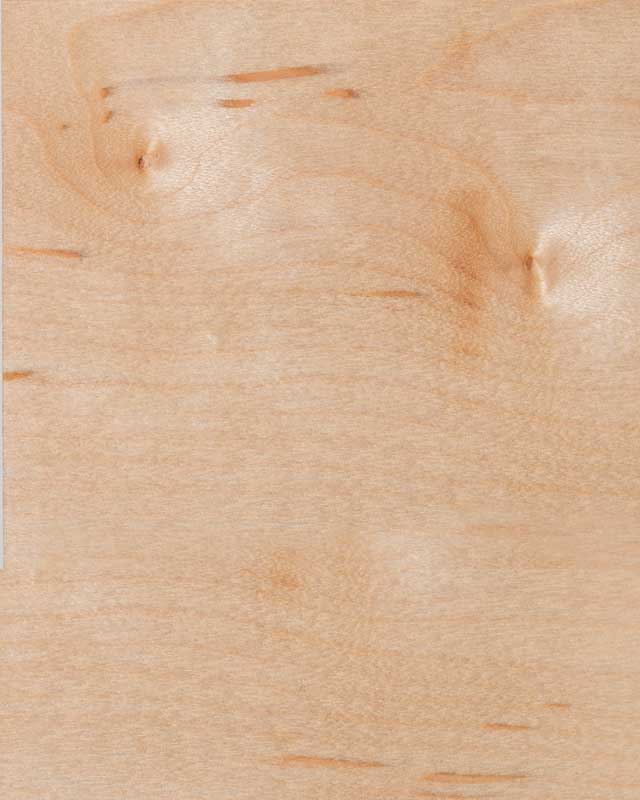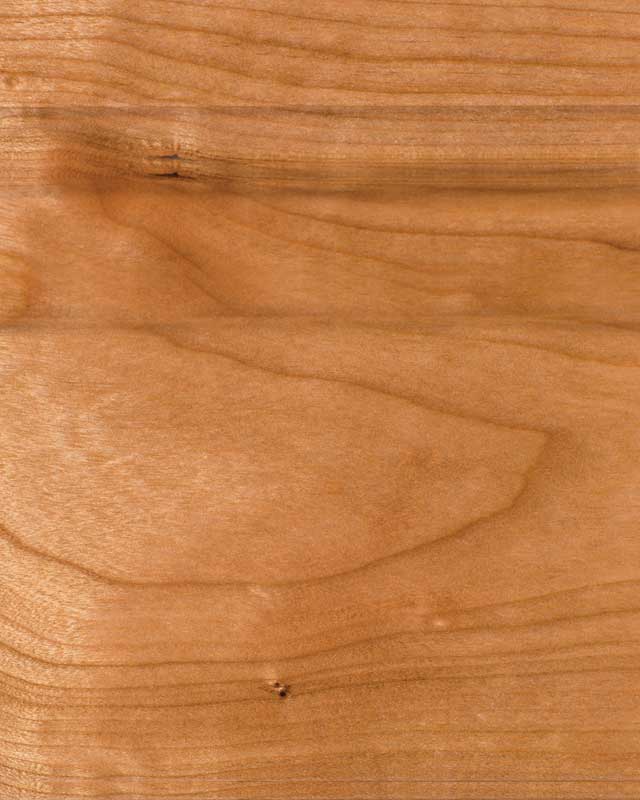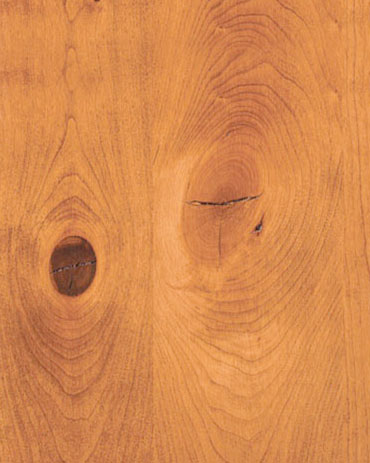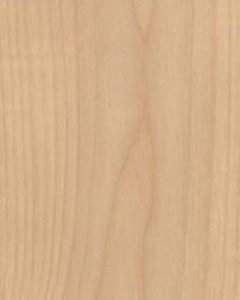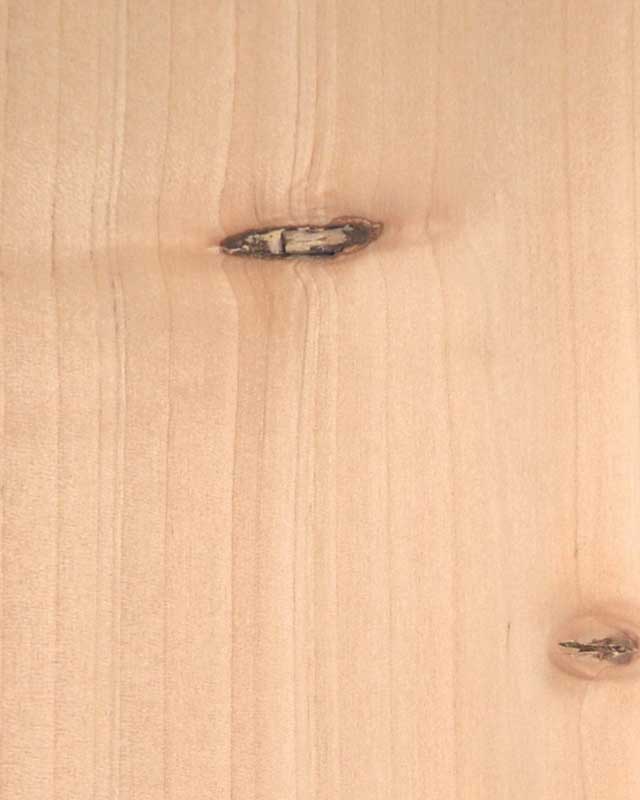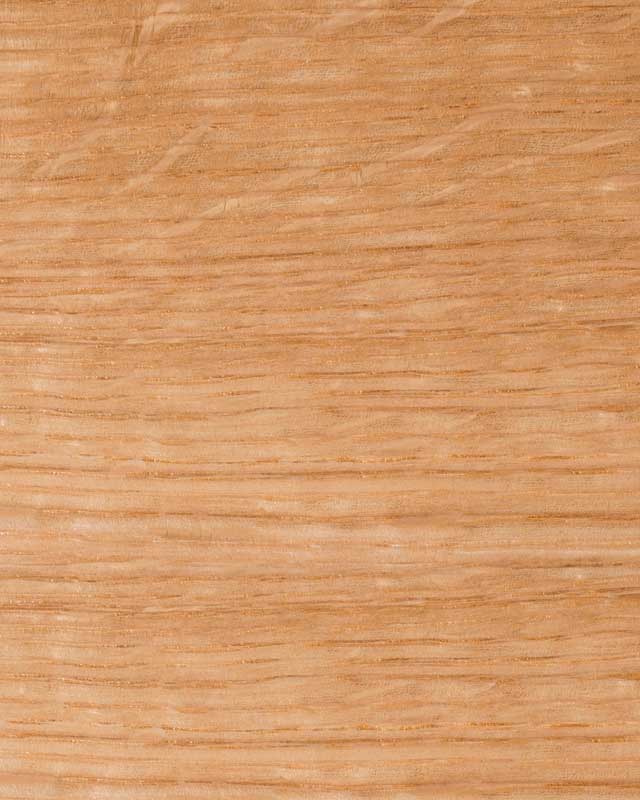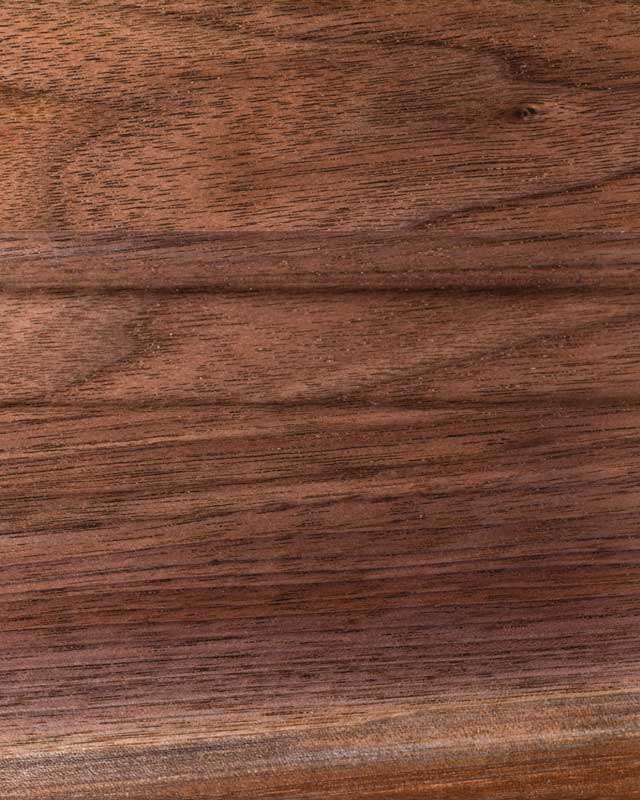Wood naturally has variations in color, texture and grain. The natural growing process of a tree creates these uncontrollable variations. Sapwood, the outer layers of a tree, transports sap. Heartwood, the inner layers of the tree, overtime becomes filled with natural deposits. This causes Sapwood to usually be lighter colored than heartwood. There are natural grain variations between all wood species. From species to species this is most noticable but there will be grain variations within a species as well. During the manufacturing process solid lumber cuttings within a species cannot be selected based on grain and color variations like can be done with veneers. Therefore even in the highest quality wood cabinetry color, texture and grain variations will be present.
Below you will see an image and description of the various wood species Tedd Wood uses to build its cabinetry. The wood species will affect the color of the cabinetry when you choose a stained finish. All of the wood species have different qualities such as the grain, hardness and natural color. Quality wood cabinetry will add great beauty to your home and kitchen. Tedd Wood strives to offer you a wide variety of high quality wood species from which you choose.
If the wood species you are looking for is not found below that does not mean Tedd Wood does not offer it. Please contact a Tedd Wood dealer near you to inquire about other wood species.
Maple
Different species of maple can range from hard to soft. The color ranges from white with a slight reddish-brown tinge to a light reddish-brown. Hard maple has a fine, uniform texture with curly grain, sugar streaks, ocasional mineral streaks and pin knots. It’s heavy, strong, stiff, hard and resistant to shock. Soft maple resembles hard maple, but is not as heavy, hard, or strong. Soft maple has more color variations.
Cherry
The sapwood is light yellow to white and the heartwood is brownish with green tinge which darkens upon exposure to a deep reddish brown with a golden luster. There is occasional pitch pockets, mineral streaks, pin knots and gum in the wood.
Rustic Cherry
The sapwood is light yellow to white and the heartwood is brownish with green tinge which darkens upon exposure to a deep reddish brown with a golden luster. Rustic Cherry will have pitch pockets, mineral streaks, pin knots and gum in the wood as well as more prevalent split knots and open knots than cherry.
Alder
Alder is a strong hardwood with a straight and fine-textured grain similar to cherry. It is very uniform in texture with occasional mineral streaks and small knots.
Knotty Alder
Knotty Alder may vary from pale pinkish-brown to a light tan or honey color. It is a smooth, fine-grained hardwood with a straight grain pattern similar to cherry. Grain variations and knots of all types and sizes will be present. Alder knots can contain slightly opened cracks. Knotty alder is chosen for its rugged appearance. It is moderately lightweight with low shock resistance.
Quarter Sawn White Oak
The sapwood of oak is white to very light brown. Heartwood is light to dark brown. Oak wood has a course texture; which is heavy, straight-grained, hard, tough, very stiff and strong. “Quarter Sawn” grade is specially cut White Oak lumber where logs are quartered and sliced across the grain resulting in a tight, straight grain pattern. While maintaining the normal color range of flat cut oak, this method of cutting eliminates cathedral grain, but still allows limited amounts of mineral and pin knots. Quarter Sawn lumber also contains a distinct characteristic called medullar wood rays or “flake”. These flakes are clearly noticeable and will appear in a variety of sizes, patterns and directions that become mroe pronounced after finish is applied. Flakes will be present on the door panels; however, framing will consist of straight grain material that may or may not contain flakes.
Walnut
Walnut is a heavy strong wood that ranges in color from off-white to dark brown. It can have curly grain, steaky color and occasional mineral and pin knots.

